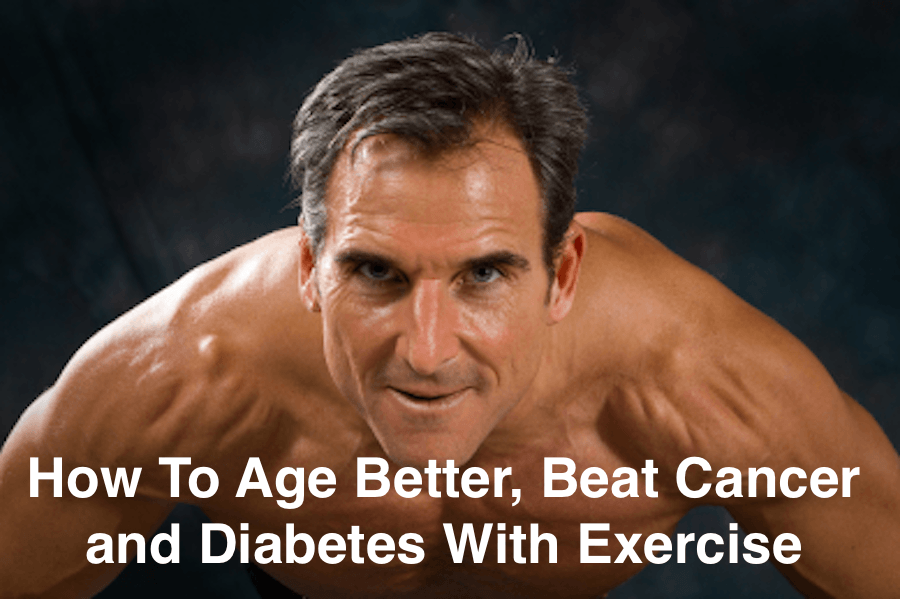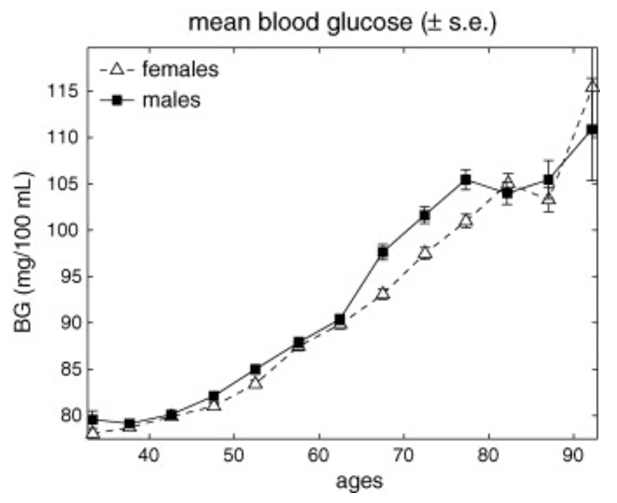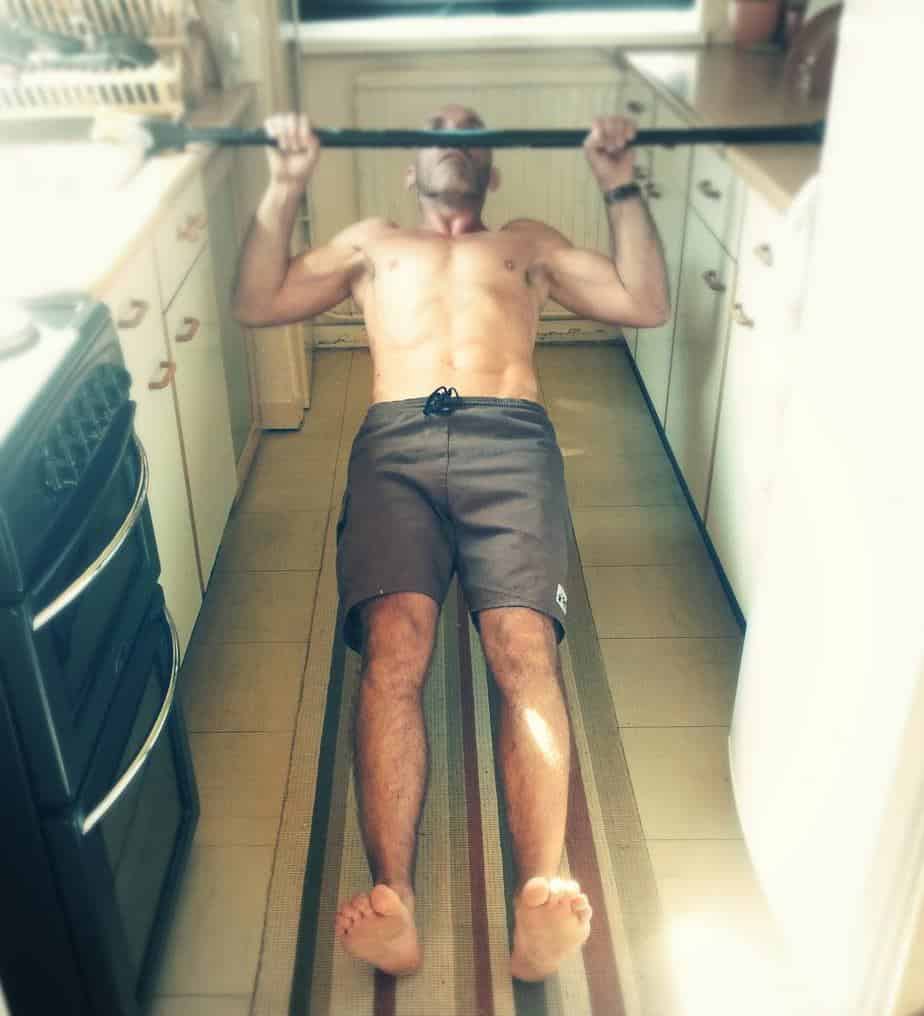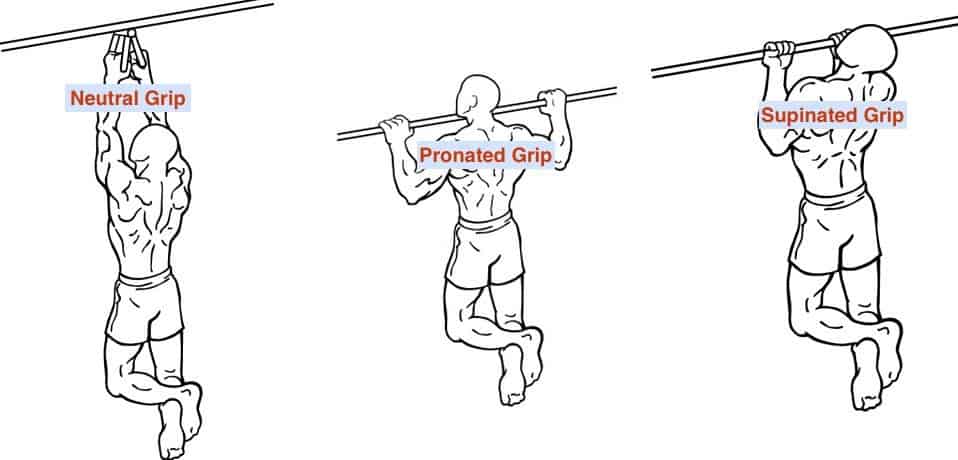How To Age Better, Beat Cancer and Diabetes With Exercise
Your chance of getting some sorta chronic disease is pretty big. Simply put, you can age better and substantially reduce your chance of becoming chronically ill by exercising. Here’s why and how.
ABOUT A week ago, I was reading the findings of a new British study that concluded:
“Men who played sports in mid-life were more likely to be active in old age than those who did other types of physical activity in mid-life. That was especially true of those who played sports for many years.” (1)
That got me wondering about what other age-related issues could be prevented or ameliorated by exercise – and not just for men, but women as well, of course.
So, I googled around and peeked at some other articles I’ve written on the subject, and can now definitely say something you already know:
To age better, you must get off your duff and exercise!
Yes, stating the obvious. Exercise is important. But what might not be blatant is just how important consistent exercise should you wish to live a long and strong life without many of the chronic, age-related diseases that much of the U.S. population suffers from.
- 133 million Americans – 45% of the population – have at least one chronic disease.
- Chronic diseases are responsible for seven out of ever 10 deaths in the U.S., killing more than 1.7 million Americans every year.
- Chronic diseases can be disabling and reduce a person’s quality of life, especially if left undiagnosed or untreated. For example, every 30 seconds a lower limb is amputated as a consequence of diabetes. (2)
You don’t have to one of the 45%!
In this article, we’ll cover:
- Why sport might be better than plain ole exercise;
- The longevity hormone boosted by exercise;
- Why exercise can reduce your chances of getting cancer and diabetes; and
- How five simple exercises will make you age better.
Let’s dig in…
Age Better By Picking An Invigorating Sport and Don’t Let Go
Let’s begin with that British study mentioned above, because it speaks to the general notion that exercise improves our experience of life in our golden years. Later in this piece, I’ll get to specific health issues improved by exercise, such as cancer and type 2 diabetes.
If you had to squeeze the conclusions of the British study into a nutshell, it would be anti-aging medical expert Dr. Ronald Klatz’s statement about anti-aging efforts,
“Nothing replaces activity and movement.” (1)
In this case, the health of 3,500 British men was evaluated for 20 years. Here’s a summary of the findings:
- Those who were physically active in mid-life were nearly three times more likely to be active at the end of the study period.
- Those who played sports in mid-life were more likely to be active in old age than those who did other types of physical activity in mid-life.
- Men who played sports for 25 years or more were nearly five times more likely to be physically active in old age than those who didn’t play sports.
I no longer play sports with any consistency, relying instead on exercising by myself; therefore I was particularly interested in the conclusion that those who played sports in mid-life as opposed to those who did other types of physical activity (perhaps like I do) were more likely to be active in old age.
Why would that be, I wondered?
The authors of the study explained it this way:
“One possibility is that people’s enjoyment of sport may be more likely to persist into old age than preferences for other types of activity.”
Makes sense to me. Thankfully, I actually enjoy working out by myself, but surely if you can find a sport to engage in with others that is fun, compliance (doing it on a regular basis) will be higher.
My last point about this study before I move onto how exercise improves specific age-related chronic conditions that befall so many of us is that there’s no reason why the conclusions of this British study would not pertain to women.
They do.
Physical Exercise Boosts Concentration of Longevity Hormone
Klohto is a longevity hormone that delays aging, reduces age-related symptoms and helps us to stay fit and healthy in old age. Researchers at the University of Pittsburgh report that physical exercise can help increase the amount of this hormone the body produces.
Klotho circulates around the body in two free forms – alpha and beta klotho. It’s not currently known what beta-klotho does, but alpha-klotho functions as a rejuvenating hormone.
Muscles produce klotho, and exercise speeds up the metabolic rate of muscle cells. So are active muscles capable of producing more klotho if they get more exercise?
That’s the question at hand.
To answer it, the University of Pittsburgh researchers performed studies on both young and old mice and young and old(er) women. (After all, women don’t get old, only radiant.)
With mice, it was clear that “age attenuated” exercise intensity (meaning, younger mice exercise with more intensity than their older brethren), was directly correlated with the production of klotho.
But with the women, the results were more nuanced:
“These differences in training intensity may confound the age-related differences in the response of klotho to acute exercise and further clinical studies are warranted.” (3)
Taken together, these findings in murine [mice] and human models suggest that exercise is a potent stimulus to increase plasma klotho levels, but that the response may be dependent on physical fitness level as well as age”, the researchers wrote. (3)
The bottom line:
- You must get the exercise intensity right to increase klotho, perhaps similarly to how high intensity interval training (HIIT) is required to boost Human Growth Hormone.
- Exercise intensity requires a baseline level of physical conditioning, so perhaps the klotho increase in the women studied were not as consistent as they were for the mice because the older women could not exercise with sufficient intensity.
Exercise Reduces the Chance You’ll Get Cancer
According to recent epidemiological studies, approximately 40% of cancers can be prevented by avoiding unhealthy environments and lifestyles. (4)
Forty percent is a debatable number. The LA Times reports that bad luck in combination with random DNA errors is responsible for two-thirds of cancer mutations; whereas the The Washington Post wrote about a study that said up to 90% of cancers are due to lifestyle choices and the environment.
The spread between 40 and 90% is wide, but even 40% is a big enough potential for me to take seriously and act on the possibility that I can influence the outcome. The science says I can, and you can, through exercise.
Physical exercise may improve lung cancer survival chances
As reported by ergo-log.com, lung cancer is one of the most fatal forms of cancer — Only 15% of patients are alive after five years after being diagnosed.
The good news: That percentage may increase if lung cancer patients get more exercise, suggests an animal study that American oncologists at Emory University published in 2014 in Cancer. (5)
According to the study, physical exercise activates the anti-cancer p53 gene, which has become deactivated in many forms of cancer that are difficult to treat.
Here’s the summary of the Emory University study’s findings:
“Targeting tumor suppressors by pharmacologic means has proven to be difficult, but exercise appears to be a promising anticancer therapy that improves p53 tumor suppressor function.” (5)
This bar chart tells the tale:
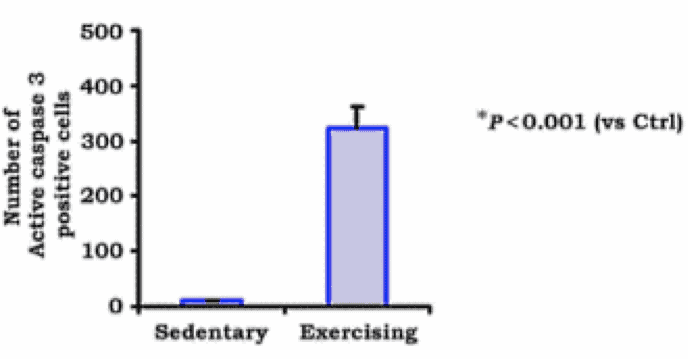 The bar chart shows that exercise activated much more of the “suicide enzyme” caspase-3 in the mice that exercised. This enzyme is normally activated by the p53 anti-cancer gene, a gene that is damaged in about half of the tumors of people with lung cancer, and in many other tumors the gene no longer functions well because of other damage.
The bar chart shows that exercise activated much more of the “suicide enzyme” caspase-3 in the mice that exercised. This enzyme is normally activated by the p53 anti-cancer gene, a gene that is damaged in about half of the tumors of people with lung cancer, and in many other tumors the gene no longer functions well because of other damage.
Strong muscles protect against cancer
More than 10,000 men were studied over the course of 25-plus years.
The bottom line:
Men who could shift heavier weights with bench presses and leg presses were less likely to die from cancer. (6)
Yes, again, this was an all-men study, but the conclusions are pertinent to women. The notion that women need to lift weights differently than men or they’ll bulk up is nonsense.
Muscle is muscle in both genders, the primary difference being the amount of testosterone in men and women, which is largely why men can grow more muscle mass than women.
In any event, this study’s finding is relevant to both genders:
- If you have average or high muscular strength your chance of developing cancer is 30% lower than if your strength level is low.
- Muscle strength reduces the chance of developing a fatal form of cancer regardless of your body weight.
- Best of all is being fit and strong: if you’re not fit, the protective effect of your muscular strength is less.
- Promoting regular resistance training involving the major muscle groups of the upper and lower extremities at least two days per week can reduce cancer mortality death rates.
- Resistance and aerobic exercise should complement each other.
The researchers think that the protective effect of muscle mass comes from the fact that muscle cells remove anabolic hormones from the body. The hormones that are responsible for muscle growth, such as IGF-1, also stimulate the growth of tumors.
Every intensive exercise session kills cancer cells
Sports scientists at the University of Copenhagen performed experiments with blood samples taken from women who were being treated for breast cancer.
The women did an intensive training session that included strength and cardio training once a week over a six-month period.
This is what they found:
“Every time you do intensive exercise, your body produces substances that kill cancer cells. The effect of a single session is limited, but the effect of a lifestyle that has included intensive exercise several times a week for years on end is probably considerable.” (7)
Exercise Can Reduce Your Chances of Getting Diabetes
Blood sugar is not kind to us as we get older. Depending on the source, anywhere from 90 to 100 ng/dL is in the pre-diabetic range.
Notice in the graph below that the typical 60 year old is right on the cusp:
I’ve written several articles about type 2 diabetes and high blood sugar and was concerned about my own before my doctor told me that I was a nutty hypochondriac and he wished his blood sugar numbers (fasting, postprandial and hemoglobin A1c) were as good as mine.
Harvard University did a blood sugar/type 2 diabetes study. They found that combining strength training with an active lifestyle could reduce your chances of getting type 2 diabetes by a third or more, depending on what specifically you’re doing:
- You could reduce your chances of getting type 2 diabetes by a third with half an hour of strength training per day, or three 50-minute sessions per week.
- You could reduce your chances of getting type 2 diabetes by 60% if you add some aerobic conditioning to your strength-training regimen, such as cycling, swimming, jogging or even walking.
This is good news to people who don’t have access to a pool or bike, and have joint issues preventing them from jogging. Although such aerobic exercises can help prevent type 2 diabetes, all you need do to considerably lower your chances of getting it is strength training.
Don’t belong to the gym, nor have a set of weights?
Well, presuming you have a body, that’s all you need, as I’ll address next.
Age Better With These 5 Exercises
At this point, I hope you’re convinced that regular exercise is one of, if not the most important keys to increasing your healthspan, and perhaps your lifespan, too.
You’ve seen that your exercise routine should include strength and aerobic training. If you’re confounded about how to put together an exercise regime, read on.
Outside Magazine has a pretty good summary of simple five-exercise strength routine that you may do with minimal equipment, or none at all.
These are the five exercises that can help you age better:
- Pull-up
- Goblet Squat
- Push-up
- Standing Lunge/Split Squat
- Single Leg Deadlift
The order of these five exercises is purposeful. Together, they will workout your entire body, moving from an upper body movement to a lower body movement, which if done with minimal rest we have the greatest metabolic, fat-burning, anaerobic/aerobic (depending on intensity) effects.
“This workout hits four major basic movements: push, pull, squat, and hinge,” comments Michael Lord, a sports chiropractor who treats and trains elite athletes in Northern California. “It also uses full ranges of motions, so it’s accomplishing mobility work within a strength routine.” (8)
Before I get into each of the five, here are some pointers about sets, reps, rest and frequency relative to what you’re trying to achieve:
♦ To get aerobically fit, make the exercises easy enough to do so that you can cycle through them with minimal rest, or none, the objective being to maintain a fairly steady heartbeat relative to your age. (Here’s how to calculate that.)
♦ To get anaerobically fit, perform the exercises at a rep range and degree of difficulty that makes you breathe laboriously as your muscles begin to quiver. So, for instance, you’d blast through each exercise, back-to-back with minimal rest, doing each in a way that’s difficult for you.
♦ To get strong and build muscle, do the exercises with a degree of difficulty such that you can only do between five and eight reps or less per exercise, resting between them sufficiently to be able to do the prescribed reps.
Now, let’s examine how to do each exercise.
1. Pull-up
Few people who do not regularly practicing pulling exercises are strong enough to do a pull-up without assistance.
If that’s you, don’t despair.
You can use bands, like the Lifeline Pull-up or have a friend hold your legs and give you a boost.
Or you can forget about a pull-up bar, per se, and instead place a broom or dole between two chairs facing each other, or any other two properly positioned, stable, elevated surfaces.
Stretch out under the “broom” such that when you pull up to it, your chests touches the broom. Aid yourself with your feet, if needed.
Note that you’re strongest with your hands in the neutral grip, then supinated and lastly pronated.
Here’s Scooby coaching you through it:
2. Goblet Squat
Look around the gym and you’ll see people doing squats with horrible form. The Goblet Squat kind of forces you to do a proper squat.
Stand with your legs slightly wider than shoulder-width apart, feet pointing slightly out. Hold a kettlebell by the “horns”, or a dumbbell close to your chest. Squat down, keeping your heels on the ground and your knees tracking over your feet. At the lowest point, your butt should be parallel to or just below your knees. Then squeeze your glutes and push up to a standing positioning.
If you don’t have a kettlebell or dumbbell, grab a pail of water. If you’ve never or have done very little squatting before, you’re body weight will suffice.
Marc Lobliner explains how to do a Goblet squat:
3. Push Up
There’s gotta be at least 50 ways to do push ups, but you just need to know (and do) a few… or maybe just one kind… to build some strength in your chest and anterior deltoids.
Begin with your chest down on the floor, palms pressing into the ground, thumbs at or a little outside of your nipples, perhaps your hands rotated out a bit if that’s comfortable. Press up, making sure that your elbows are neither pressed against your body nor out perpendicular to it, but somewhere between these extremes. Gently lock your elbows at the top. Lower your back all the way down, so your chest hovers just a centimeter or two off the ground. Press up again. Repeat. Be sure to tuck in your stomach and keep your core tight throughout the movement so you have minimal arch in your spine. Do not let your head hang… lead with your chest.
Let fitness pro Jeff Cavalier show you some variations:
4. Standing Lunge/Split Squat
To do the Standing Lunge (sometimes referred to as the Split Squat), stand straight, toes pointing forward, feet about six to eight inches apart. If you’re using dumbbells to increase the challenge, hold an equal weight in each hand at your sides, arms straight. Step forward with either foot so your knee is above your ankle. Push through the heel of the forward leg to return to an upright standing positioning. Repeat, this time stepping down with the opposite leg.
Tala does a pretty good job of demonstrating the Split Squat, though I suggest that your knee NOT come so far forward over the toe:
5. Single Leg Deadlift
This is one of my favorite movements. I find it gives my glutes and lower back a good workout and improves balances, something very important to maintain as we age.
Stand on one leg, keeping your knee slightly bent. If you’re using one dumbbell, hold it on the same side as the leg you’re standing on. Bend forward at the hip, extending your free leg straight behind you for balance. Continue lowering until your chest is parallel with the ground, dumbbell almost touching the floor. Then press back to an upright position.
As you get stronger, try using a lighter dumbbell in the hand opposite of your standing leg. This will workout your core powerfully, so start light and only after you’ve become adept with the basic move.
Here’s a demo:
If you’d like to check out more exercise options, I’ve written many, including these:
- How To Get Lean and Muscular
- 3 Expert-approved Anti-aging Exercise Routines
- The Minimum Exercise That Adds Years To Your Life
- The Many Benefits of Strength Training
With all that said about exercise, if perchance you’d rather drop dead than exercise, well, rather than that, simply relax.
A Simple Relaxation Technique with Anti-aging Effects
Researchers at the University of Shahrekord in Iran discovered that muscular progressive relaxation exercises reduce fatigue, increase vitality, improve daily physical functioning, help the brain to work better and increase emotional stability, reports ergo-log.com.
The researchers got 30 people with an average age of 65 to perform muscular progressive relaxation exercises three times a week for three months.
During the 45-minute sessions, the participants tensed different muscle groups in turn and then relaxed them.
The relaxation exercises made the participants physically and psychologically fitter. They reported that they found it easier to do everyday physical activity and that relaxation reduced aches and pains. In addition the participants felt they had more vitality. Cognitive processes and memory improved, their emotional stability increased and the percentage of participants with serious fatigue was reduced.
Thus, if you’re allergic to exercise or feel you’re too old or compromised to try it, take heart with the researchers conclusion:
“Regarding the findings of the present study, we can conclude that the elderly quality of life could be promoted, their fatigue severity can be mitigated, their independence in doing daily activities is further increased, and finally, they can help achieve a prosperous and healthy aging through implementing a regular program of progressive muscle relaxation.” (9)
Your Takeaway
In order to age better and live a life with more vitality and less age-related chronic health issues, you need to find a way to move, frequently, regularly and under resistance (body weight, dumb bell, barbell, kettlebell)
Of course, you need to start with where you’re at. Perhaps that means walking and doing some basic strength conditioning like pushing yourself away from a wall until you get strong enough to do knee-on-the-floor push-ups, progressing on to regular push-ups. Likewise with all the five exercises I showed you.
Nothing we know of will do more to give you a relatively pain-free, disease-free and mobile golden years as exercise, so get to it!
Last Updated on June 21, 2022 by Joe Garma

